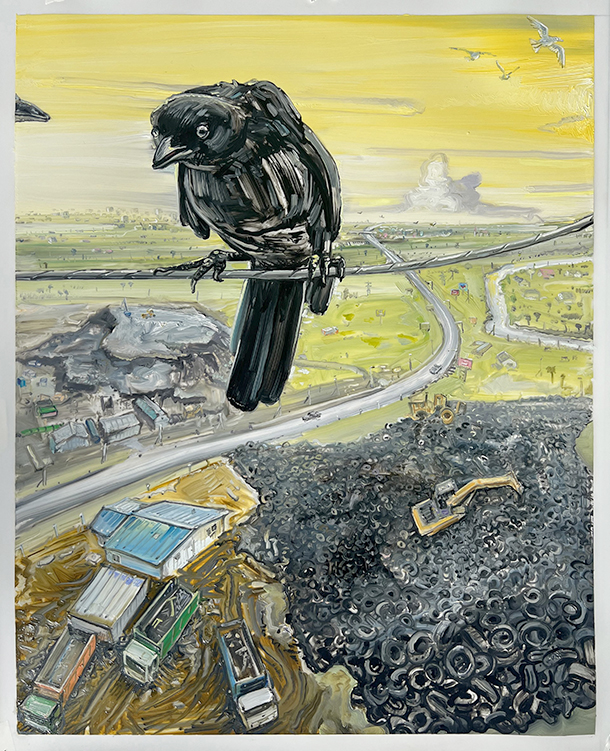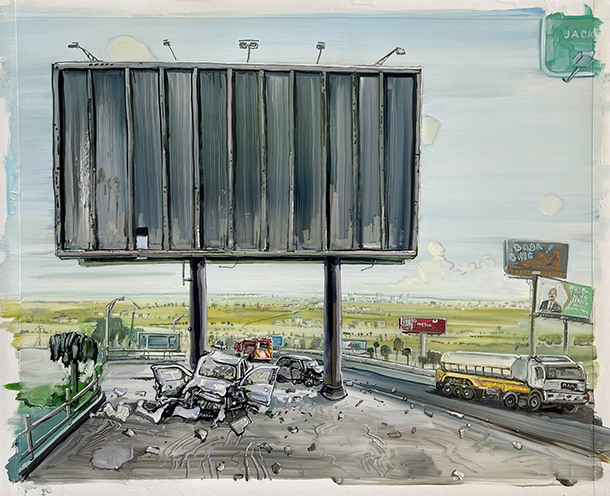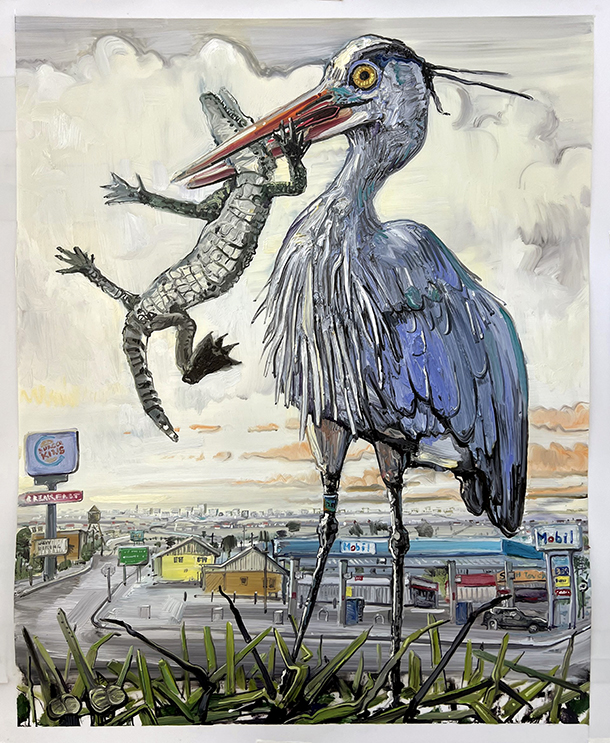
FOR YEARS, AMER KOBASLIJA HAS PRACTICED A DISTINCTIVE FORM OF CONTEMPORARY HISTORY-AND-LANDSCAPE PAINTING
by Edward M. Gómez
I first met the Bosnia-born painter Amer Kobaslija not too long after the massively destructive earthquake and tsunami of Mar 2011, which had struck the Tohoku region of east-central Japan on Honshu, the largest island in the Japanese archipelago. Kobaslija’s wife is Japanese, so the artist felt a personal connection to a country that had just been devastated by a double whammy of natural disasters, as well as by the severe damage those events caused to a coastal nuclear-power plant in Fukushima Prefecture.
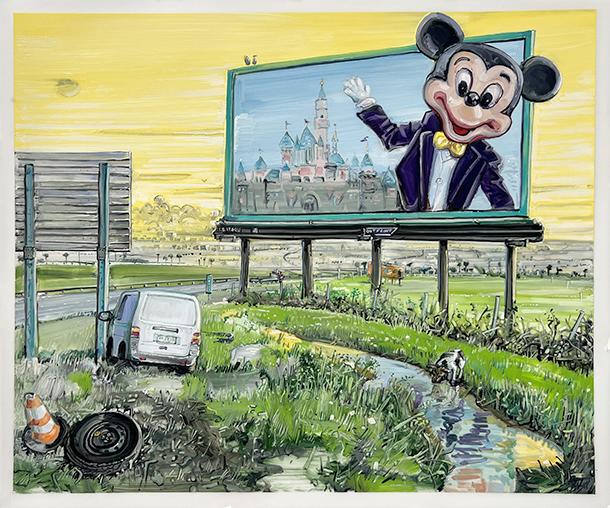
For Kobaslija, who, as a young man, had survived the horrors of the Balkan wars, news images of the destruction experienced by Tohoku’s farmers and other inhabitants reminded him of the human-scarred landscapes and towns he had seen in his youth.
He went on to make several research trips to the Tohoku region when it was possible to do so. There, his father-in-law, serving as his interpreter and guide, assisted Kobaslija as he spoke with survivors of the March 2011 disasters and began making sketches and shooting photos that would serve as reference material for a large, ambitious series of oil paintings he would produce to document the effects of those historic events. In time, as he made several return visits to the region, he also recorded in his paintings the rebuilding of the devastated region and the regeneration of its natural environment.

In New York, I saw a selection of those paintings at George Adams Gallery, Kobaslija’s main representative in the United States. I met the artist and began what has become a years-long, ongoing critical dialogue with him about his art, his thoughts about history and the world, and the research-travel experiences that inform and influence his work.
Around that time, while living with his wife and infant daughter in New York City, Kobaslija commuted regularly to Pennsylvania, where he taught art at Gettysburg College. More recently, he and his family have resided in Florida, where Kobaslija has been teaching in the art department of the University of Central Florida.
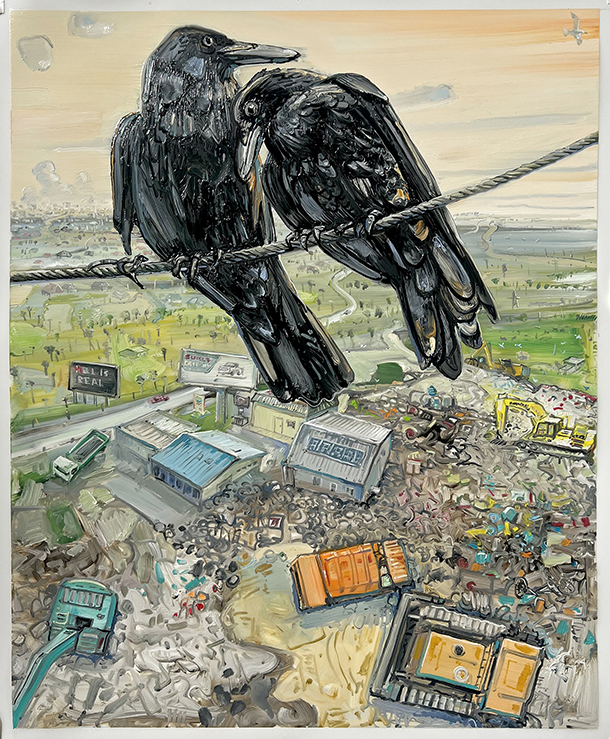
Kobaslija was born in Banja Luka, Bosnia, in 1975, and in 1993, after the outbreak of the Bosnian War, he managed to make his way to Germany. There, he studied at the Academy of Fine Arts in Düsseldorf, and eventually was able to immigrate the U.S.A. along with other members of his family.
The Kobaslijas settled in Florida, where Amer went on to earn a bachelor’s degree in art from the Ringling College of Art in Sarasota. Later, living in New Jersey and setting his sights on establishing a career in the New York art world, he earned an MFA in fine art from Montclair State University.
For Kobaslija, the search for form and content in his art often has meant trying to capture the atmospheres of his immediate surroundings — and, sometimes, those of places farther away — while also examining the expressive potential of oil paint’s luminous, elastic, viscous goo.
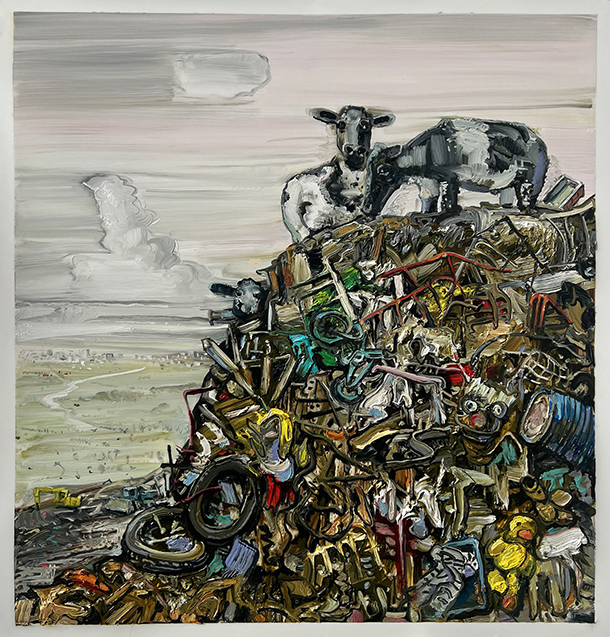
When it comes to particular places, over the years Kobaslija has portrayed artists’ studios — his own and those of many others, including the rarely seen workspace in a village in Switzerland of the modernist painter known as “Balthus” (Balthasar Klossowski de Rola, 1908-2001).
Florida has provided the artist with an endless supply of provocative, if not downight odd and goofy, subjects to examine in his work. Certainly, back in Bosnia, he never would have been able to explore a landscape like that of the Everglades in southern Florida, with its legions of alligators and its lush, steamy swamps, or the landscape of American urban sprawl, with its inescapable fast-food joints, bland strip malls, and visually noisy, in-your-face, scene-stealing billboards.
Here, we’re presenting several works from “Road Signs,” Kobaslija’s ongoing painting series, which focuses on Florida.
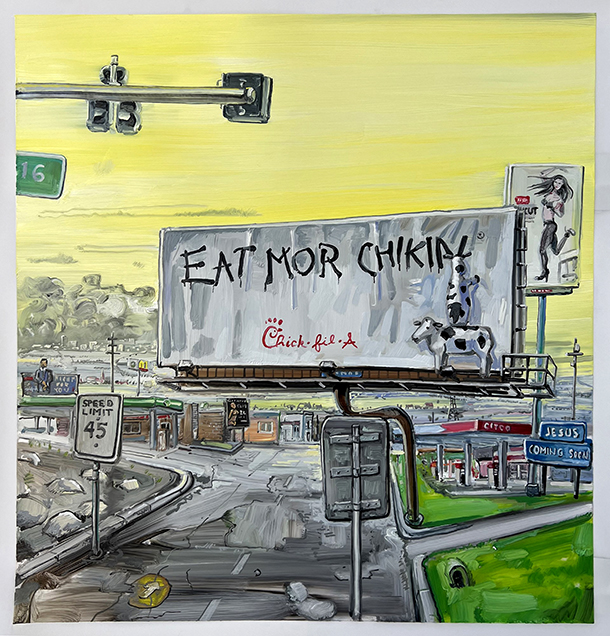
About these works, the artist told brutjournal, “These paintings reflect the scenery encountered in the Florida lowlands, alongside the dirt roads and highways. In several of these compositions, crows appear perched ominously on electric-power lines, suspended high over massive landfills; in background are picturesque vistas that extend into infinity. The series culminates with the scenes of billboards aggressively advertising various products.”
Kobaslija added that the visual clutter of Florida’s landscape includes “ubiquitous highway-exit signs, with logos of iconic fast-food chains visible in the foreground, and cows grazing in the distance, along with signs with religious warnings and proclamations juxtaposed with those for adult-fantasy stores and ‘gentlemen’s clubs,’ gun shops, cosmetic surgeons, and politicians asking the people for their votes.”
The painter said, “There is so much more, a pictorial overload that’s comical yet troublesome in all sorts of ways. Such scenes are visually arresting while rich in metaphors; they’re reflective of our consumer society and American way of life.”
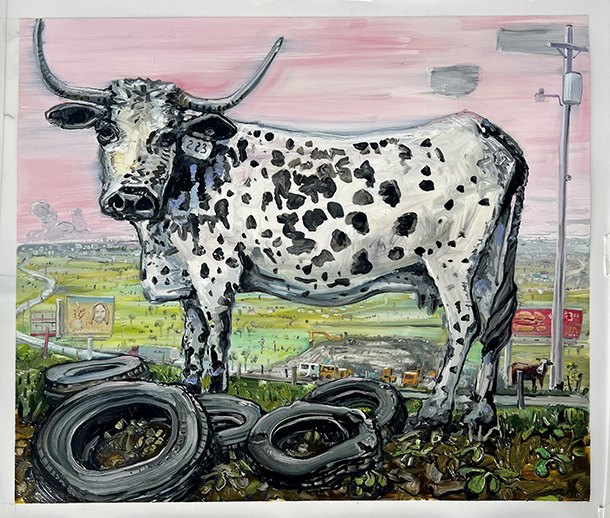
We asked Kobaslija if, standing back a bit from his visually cacophonous subject matter, he might detect some broader meaning in it all.
He noted, “The aim of my ‘Road Signs’ series is to allude to and tease out certain themes that seem to lie beneath the surface of such images. These paintings tell stories in a way that is somewhat akin to something the German-American historian and philosopher Hannah Arendt [1906-1975] once stated, namely, that: ‘[s]torytelling is about revealing meaning without committing the error of defining it.’”
So, Kobaslija explained, citing the pictures in his “Road Signs” series, “It’s not about imposing a specific message. Instead, it’s about what the viewer brings to each scene, filling in the gaps. The implied meaning of each image remains elusive, thereby allowing viewers to project their own fears, desires, and biases onto these vistas. Paintings are portals. They’re also mirrors, revealing as much about the seer as they do about what is seen.”
